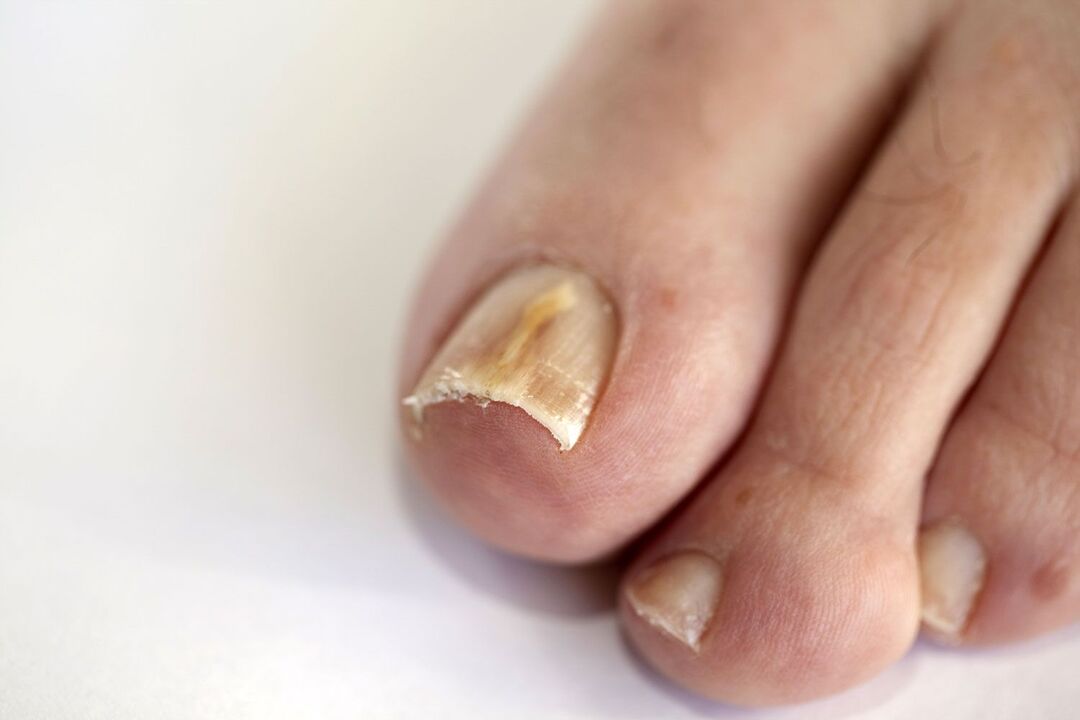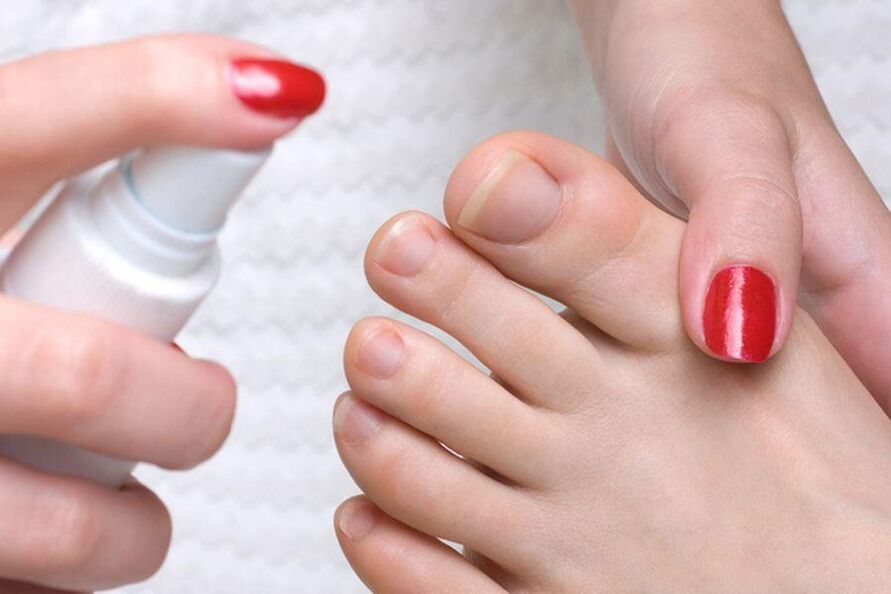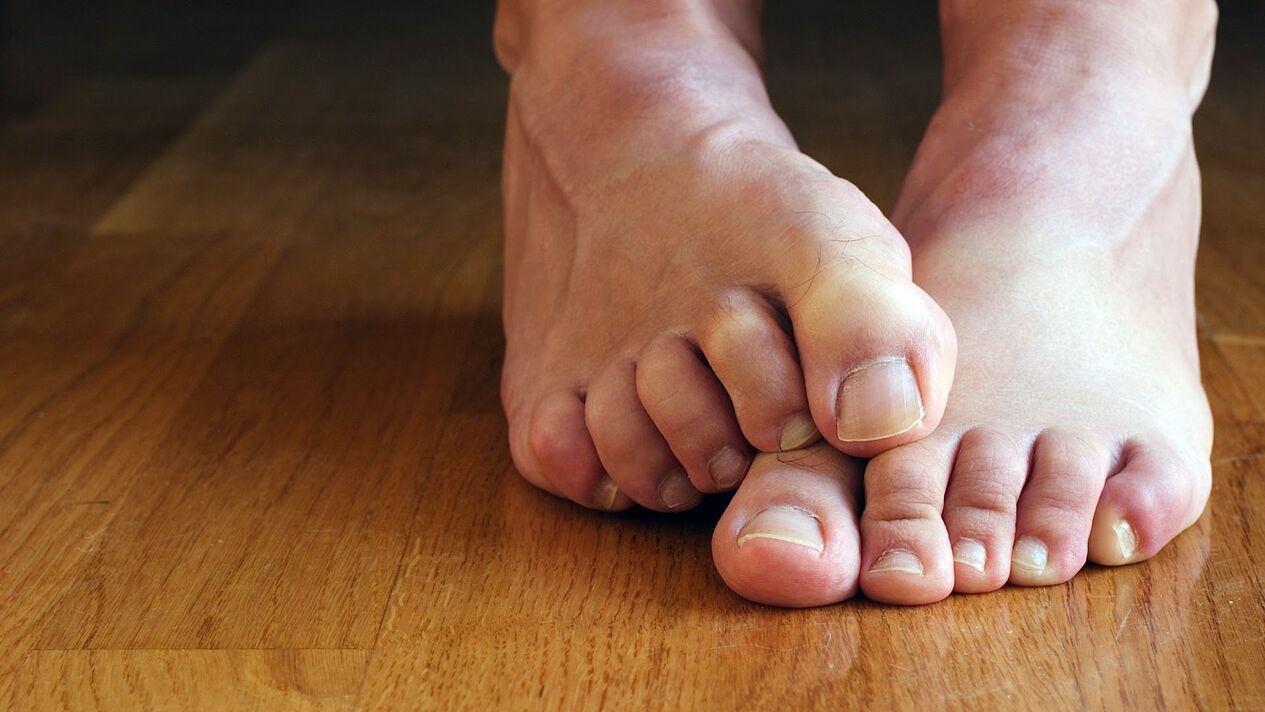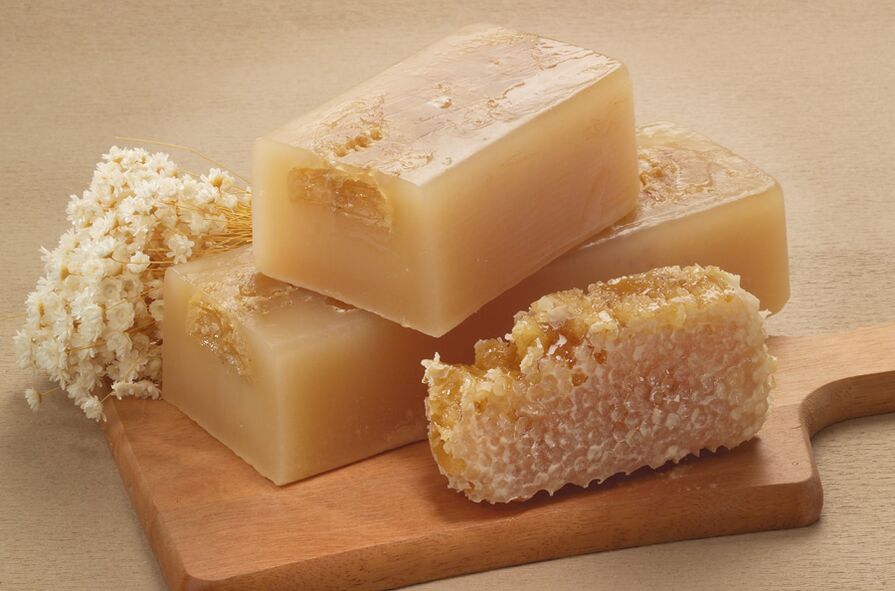If a person has a fungus on the feet, then the question of how to treat it is at the forefront for him. Of these many forms of infection, fungus affecting the feet is one of the most common. It is caused by a pathogenic fungus of the species Trichophyton, which, with increased sweating, can affect both the skin of the feet and the nail plates on the fingers. The birthplace of microorganisms is Southeast Asia, where nature itself has created the ideal conditions for their growth: hot and humid climate plus a large population. In recent years, it has spread to Europe and America. Currently, more than 20% of the world's population has fungal skin diseases.
Ways of infection

The most common way of infection with fungal spores is by contact. This most often occurs in the living or working conditions of a sick person and a healthy person.
Among the common ways of transmission of tinea pedis and toenails are:
- common household items that come into direct contact with skin and toenails (beds, socks, shoes, pedicure supplies);
- public baths and showers - as a rule, they are used by people working in various types of dust and dirt production (mines, factories), as well as athletes, conscripts, people who often have to sweat;
- sunbeds, outdoor seating and beach mats.

To prevent fungus, it is necessary to strictly observe the rules of personal hygiene, trying to avoid situations where it is possible to infect.
The possibility of infection increases with sweaty feet, if not promptly washed, changed socks and shoes, treated with antiseptics. Therefore, disease outbreaks most often occur in field conditions, when during the long transition from sweaty feet, conditions are favorable for fungal reproduction.
In addition to sweaty feet, a weak immune status will increase the risk of infection. At present, due to the worsening of the environmental situation in the world and the increase of diseases such as diabetes, this factor is placed at the forefront of the causes of the spread of this pathology.
Symptoms and Diagnosis
Symptoms of foot fungus are well known.
Among them:
- irritation, redness, severe itching and rash on the skin;
- flake off its surface;
- chapped, diaper rash in the area between the buttocks;
- nail deformity.

Such a pathology of the legs causes a lot of problems and causes the victim not only physical, but also moral discomfort:
- inflamed and swollen feet;
- unpleasant odors emanating from the diseased skin, even when the feet do not sweat;
- discolored, scaly, and cracked nails.
But symptoms that reach this extent develop gradually, if you don't fight the illness. Therefore, at the first signs, you should not look for effective foot fungus cures on your own, but contact a dermatologist - the doctor will have to decide which antifungal drug should be used. used to defeat pathogens. as fast as possible. With the current level of development in pharmacology and compliance with the recommendations of a specialist, a quick cure of foot fungus is completely possible.
Arriving at a dermatologist's office with such complaints, the patient must first undergo a diagnostic procedure. Clarifying the diagnosis is necessary, as it directly depends on how the foot fungus is treated.
To determine the type of fungal spores, the following methods are used:
- Irradiation with a special lamp makes the damaged area visually distinctive, since the skin in this place under its rays stands out from the general background, becoming burgundy.
- Microbial seeding based on skin scraping allows, by placing samples in a nutrient medium, multiplying them for the purpose of external observation and clarifying the type of pathogen that has caused the development of the disease.
- The PCR technique is the most modern to date, making the diagnosis almost one hundred percent certain, since it is based on analysis of the DNA of the fungus.
After receiving the results of research, choosing the most effective remedy against the fungus, the doctor will give the patient a number of drugs and prescribe a program for them to use. To choose the most effective antifungal medicine, he must take into account factors such as age, health status, and diseases.
Pharmacological arsenal
And yet, choosing a super effective and inexpensive cure for a fungus that grows on the feet, among a large number of items, is not an easy task. It can be not only an external drug, but also an oral preparation - if external forms are impotent. However, as a rule, treatment begins with them.
The main active ingredient of the drug is terbinafine - a proven remedy against foot fungus, capable of rapidly destroying fungal spores. The antifungal cream, ointment, and spray should both be applied directly to the skin of the feet, which have been previously washed and dried, while ointments and creams should be gently massaged into the affected area. In people who already "have" foot fungus, the skin is often rough and thickened, especially on the soles and heels. Fungicides cannot penetrate through such a "screen", therefore, before starting treatment, the skin must be steamed in a hot soapy solution to soften the stratum corneum and remove it with a pumice stone and tools. Specialized grinding.
As the cuticle dries more and more, the foundation of the antifungal agent should be as greasy as possible. This requirement is met by ointments, which should be used in this case. In the skin between wrinkles, where the skin is thinner and more sensitive, antifungal sprays or suspensions are effective.
To combat foot fungus, or rather, in the toenails, special therapeutic varnishes are also used, applied to the nails.
Before application, it must be treated: the irregularities are polished, the affected areas are removed as far as possible to help the penetration of the drug into the nail tissue.
Sometimes you have to resort to the help of a surgeon to completely remove the affected nail plate.
If this is not done, even the most effective home remedies for foot fungus will not be able to have an adequate therapeutic effect.
In the most severe and advanced cases, mycosis of the feet cannot fight off external agents, since the toxic waste products of the pathogen enter the bloodstream, starting to poison a person from day one. inside. Then, the treating doctor prescribes antifungal antibiotics for oral administration, which have a systemic inhibitory effect on pathogenic microorganisms.
It is not possible to arbitrarily use such effective foot fungus remedies without the direct appointment of a specialist, because if taken uncontrollably, it can have extremely serious consequences. One of them is the development of immunity of fungal spores to these drugs and their components.
Folk methods of treatment

What helps best for foot fungus - pharmacology or folk medicine? Only a doctor can answer how to cure tinea pedis, but it would not be superfluous to advise him on home treatments.
The most reliable means to help get rid of fungus on the feet have long been known to many:
- Wash soap from fungus on the feet. With mushrooms, a foot bath with this ingredient is very useful, especially effective for excessive sweating of the feet. After grinding off the 70% fragrance-free brown laundry soap, take a tablespoon of crumbs and mix it with a tablespoon of soda. Pour the mixture into water that has been heated to 40 degrees, dip your feet in a solution of soap and soda for half an hour. When steaming, foam the skin between your fingers and rub your feet with a brush to improve the penetration of the solution ingredients into the upper layers of the epidermis. At the end of the course, it must be done every other day, wash your feet with clean water and apply topical medication as prescribed by the doctor.
- Vinegar is also a good folk remedy for foot fungus, especially against fingernails. Handle the nails with care, taking care not to injure them, as this contributes to a deeper infection. After pouring hot water into the bowl, the temperature is about 50 degrees Celsius, pour a cup of 9% vinegar in the same place. Soak your feet in a vinegar-water solution (there should be enough liquid to completely cover the feet) for 10-15 minutes. Then, without rinsing, dry your feet and put on clean socks. Repeat this foot soak 3-4 times a week.
- A good home remedy for toenail fungus is iodine. Iodine tincture should be applied with a cotton swab to the warts, after washing the feet and treating the nails. When using an anti-fungal iodine solution, care should be taken not to burn, especially in the area between the toes.
- Propolis from the fungus is used in the form of topical applications to the nail and the skin around it, after steaming it in a hot soapy solution.

Herbal recipes for fungus on the skin:
- Euphorbia is an effective remedy against foot fungus. The juice of the plant should be lubricated with a cotton swab with a sore nail.
- Celandine from mushrooms - 3 tables. Dill grass pour 1 liter of water, boil, cool to an acceptable temperature (40-46 degrees) and then put in the foot bath solution.
- Burdock - to treat foot fungus, you need to wrap the crushed burdock leaves, put on clean socks and go to bed with such a gauze.
- Tea tree oil from the fungus on the feet is effective only in the early stages of the disease.
Unfortunately, a remedy that can get rid of foot fungus in one application has not yet been invented. Therefore, when using both pharmaceuticals and folk remedies for fungus, it is imperative to consult a doctor and follow the doctor's recommendations. The best medicine for foot fungus is to use the medicine that your doctor prescribes.



























